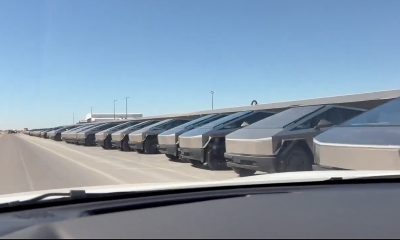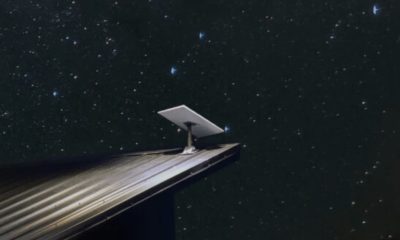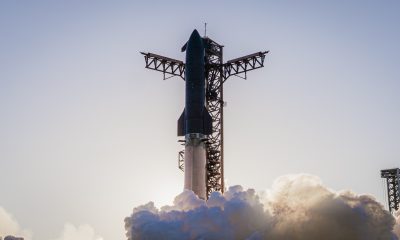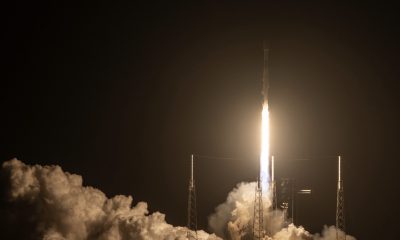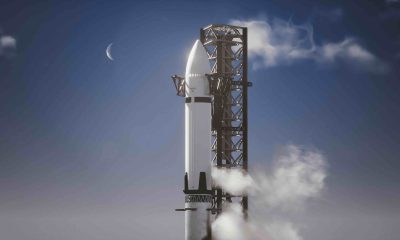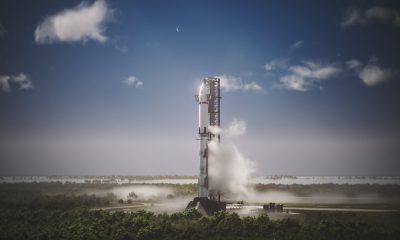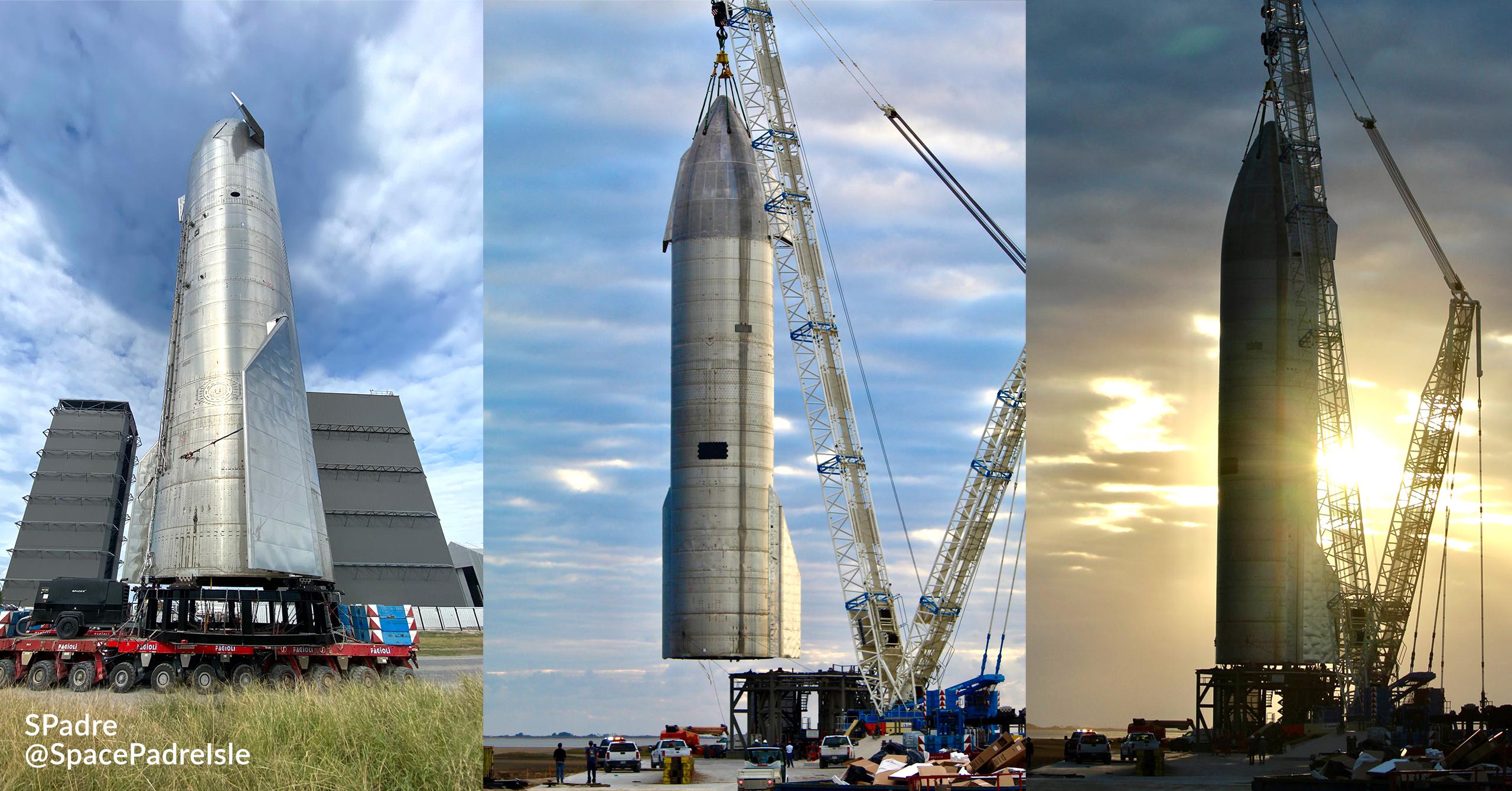
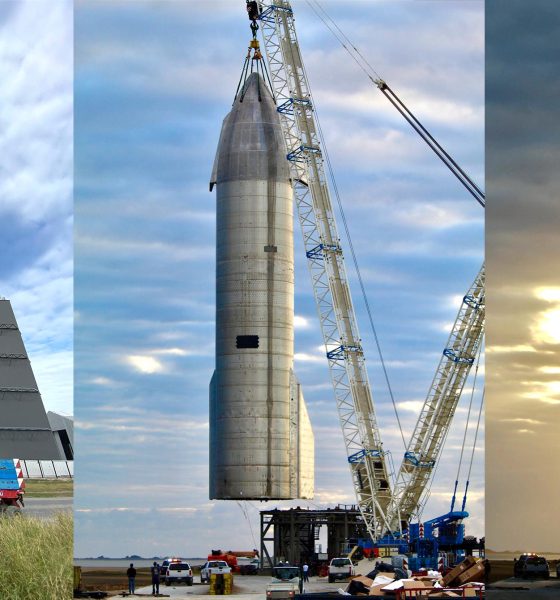
News
SpaceX moves next high-altitude Starship to launch pad after fixing fall damage
Update: Right on schedule, SpaceX rolled Starship serial number 9 (SN9) out of its ‘high bay’ assembly roost and transported the 50-meter-tall (~165 ft) stainless steel rocket to a launch pad about a mile down the road.
Wasting no time at all after having preemptively delivered a large crane from factory to pad the day prior, SpaceX began the process of lifting and installing Starship SN9 on one of two simple launch mounts less than three hours after arrival and began securing the rocket to the stand less than an hour after that. As discussed below, it’s nothing short of spectacular (and possibly unprecedented) that Starship SN9 was a victim of a workstand collapse, suffered some damage as a result, had that damage repaired or parts replaced, and was ready to roll to the launch pad to start pre-launch testing within a span of eleven days.
Additionally, SN9’s arrival means that SpaceX has now delivered a second complete Starship less than two weeks after Starship SN8 became the first full-size prototype to launch to high altitude atop multiple Raptor engines and skydive back to Earth. With the landing pad yet to be fully cleared after that launch debut, the crash-landed wreckage of SN8’s nose is even visible behind Starship SN9 in unofficial coverage of the new rocket’s pad transport and launch mount installation. As of December 22nd, SpaceX has one more road closure scheduled on Dec 23, followed by a trio from 8 am to 5 pm CST (UTC-6) from Dec 28-30. Stay tuned for updates as SpaceX prepares the second full-size Starship ever for tank proof and static fire testing!
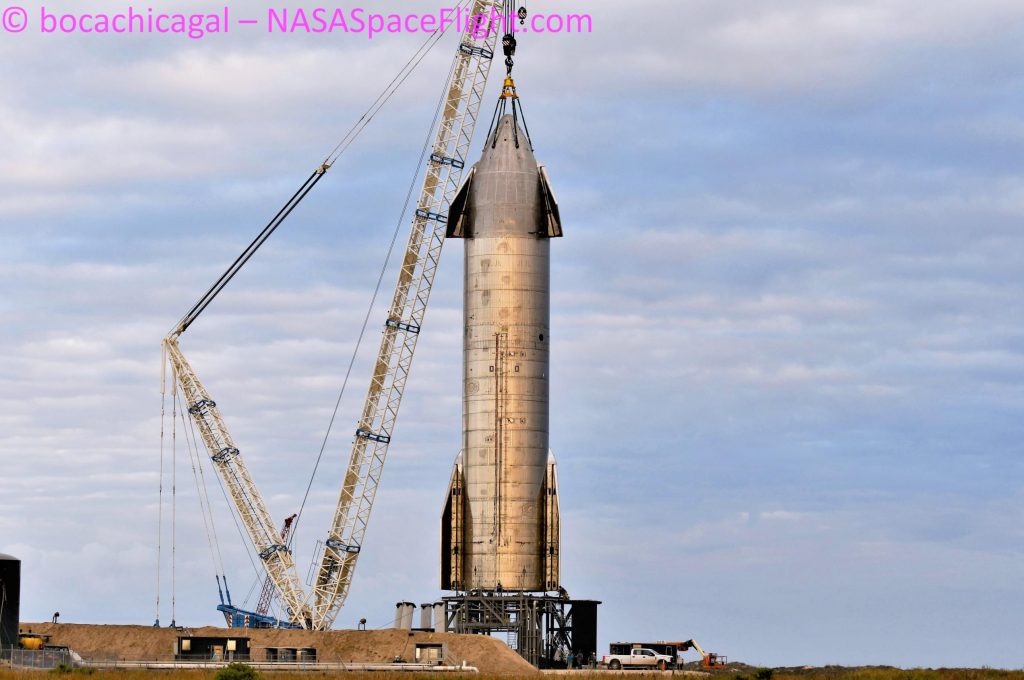
A handful of days after a workstand collapse threatened to end SpaceX’s next high-altitude Starship before it could leave the cradle, the rocket appears to have shrugged off whatever damage was caused with ease.
On the morning of December 11th and less than 24 hours after SpaceX investors and VIPs like COO Gwynne Shotwell and CEO Elon Musk were standing almost underneath the rocket, an unknown issue cause Starship SN9’s workstand to partially collapse. Seemingly through sheer luck, the part of the circular stand that collapsed was towards the corner of the ‘high bay’ building housing SN9, causing the rocket to tip around five degrees before colliding with the wall’s steel frame.
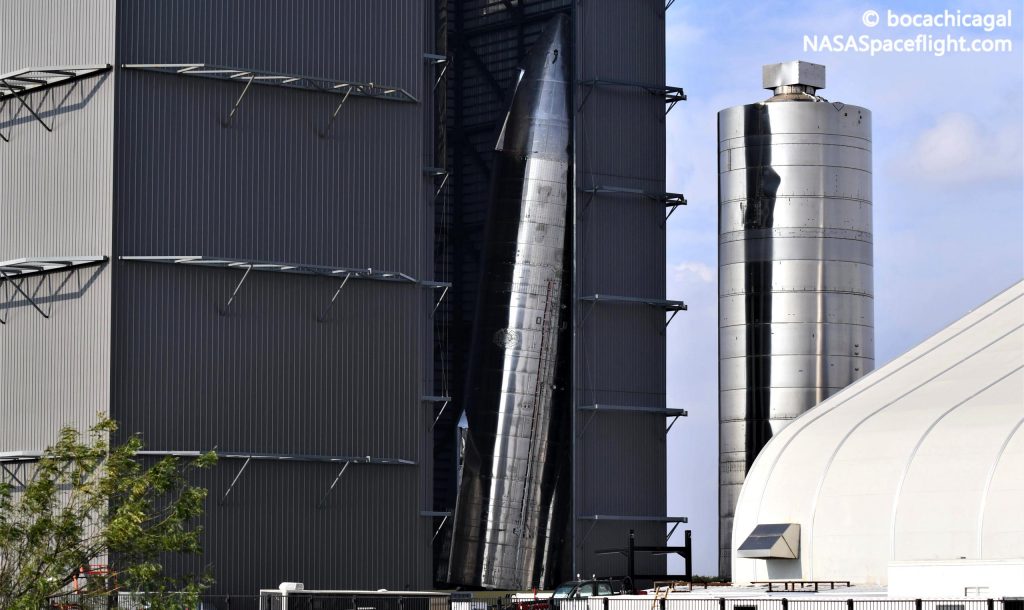
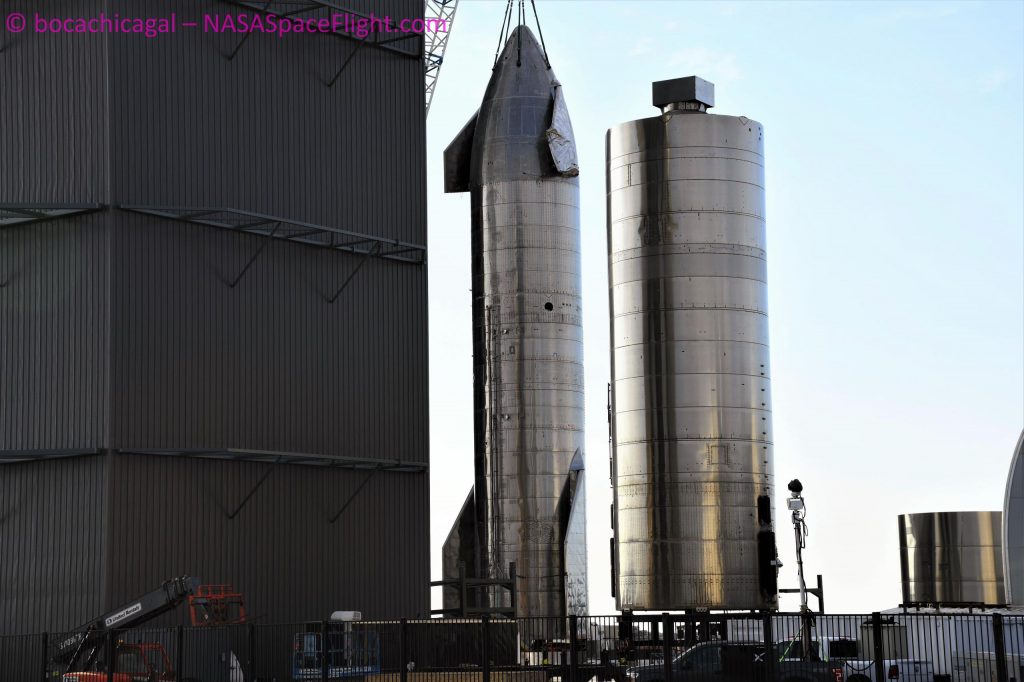
Again, by some stroke of luck, the same angle of Starship SN9’s fall that prevented the rocket from tipping over onto Super Heavy’s in-work tank section (with workers possibly inside) seemingly allowed its flaps to absorb the bulk of that impact. One of two pairs used to keep the ship steady during a skydiver-like freefall maneuver, SN9’s forward and aft starboard flaps suffered obvious damage, perhaps unintentionally functioning like the crumple zones designed to protect passengers during car crashes.
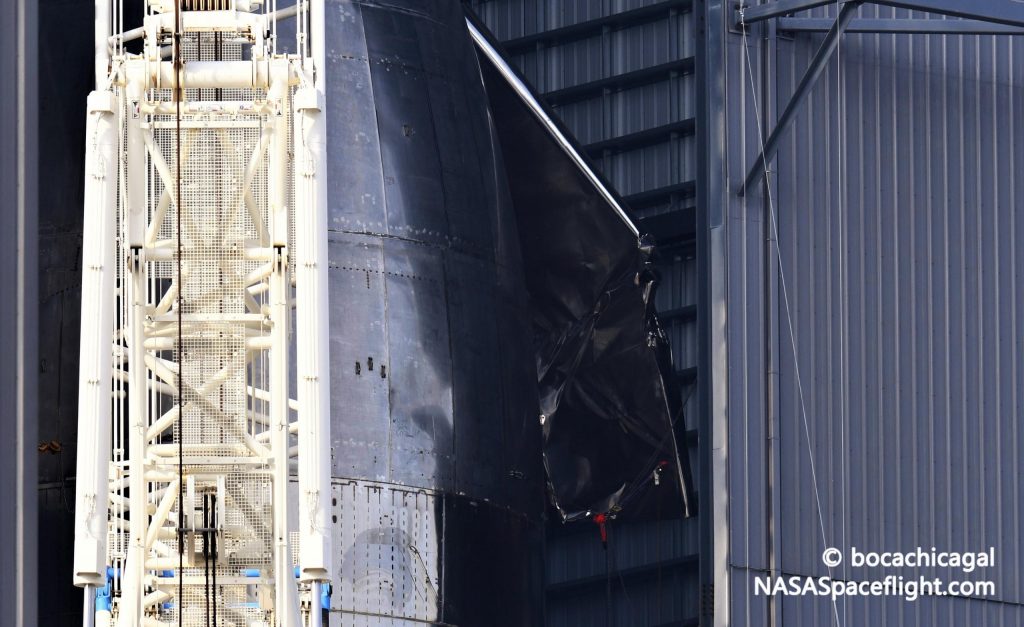
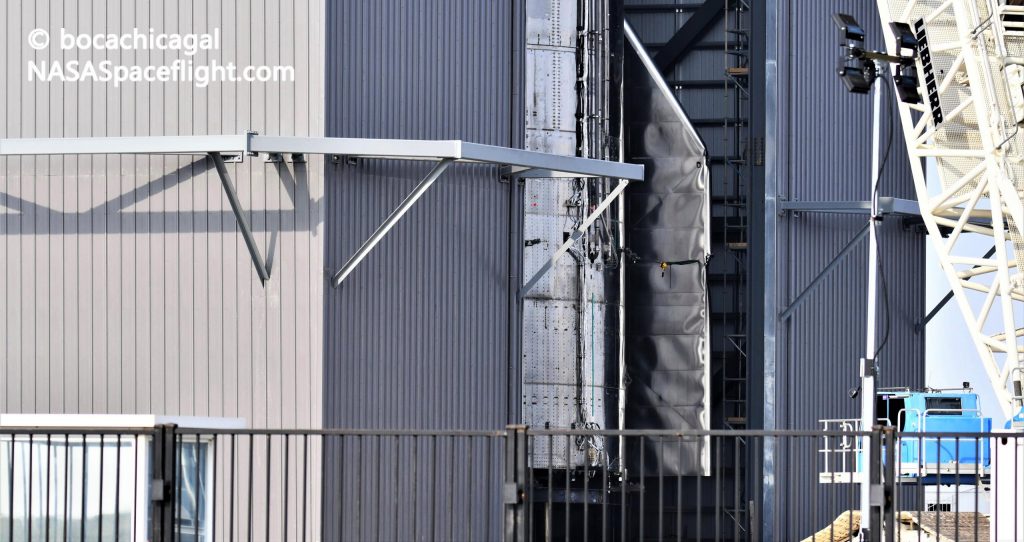
Aside from one or two subtle dents caused by the thoroughly off-axis stresses, the rest of the fully-assembled vehicle remained visibly untouched, though it was a near-complete unknown if Starship was capable of surviving such an ordeal. For 99% of the world’s rockets, almost all of which are either built out of aluminum or carbon fiber, tipping from a vertical position into a steel wall at anything less than a snail’s pace would likely be the end of any normal propellant tank – probably up to and including even SpaceX’s own reusable Falcon boosters. At a minimum, extensive repairs would be required.
On December 20th, nine days after the incident and six days after a crane lifted SN9 back into a stable position, SpaceX quietly replaced the Starship’s crumpled forward flap after having removed both damaged flaps in the days prior. The installation of that replacement flap – possibly taken from Starship SN10’s nose – all but confirmed a best-case scenario, as it would be hard to remove the damaged hardware and install a new flap so quickly if the underlying hinge and mounting mechanisms had been damaged in the fall. If only the aft – but not forward – flap mechanism was somehow damaged, it would also make little sense to install a new forward flap.
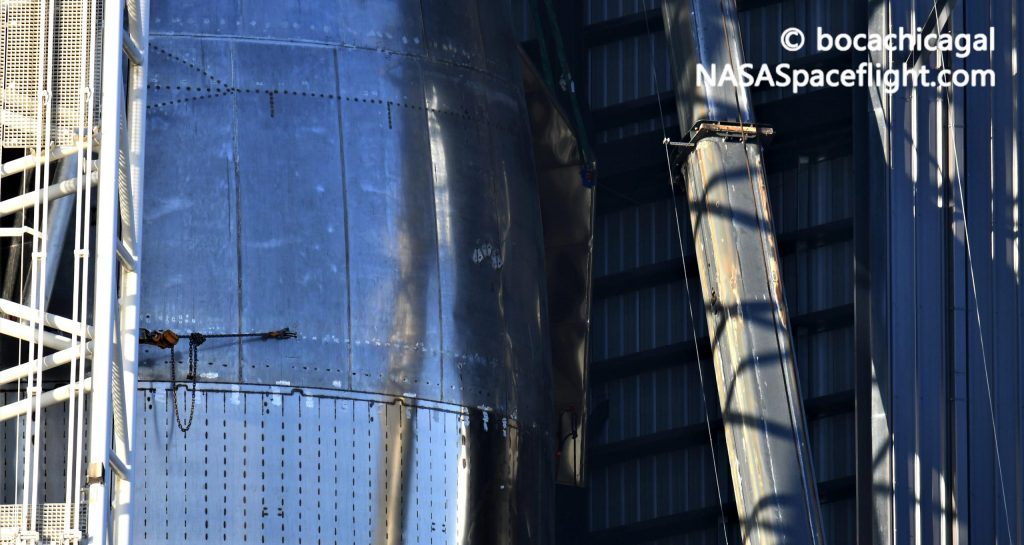
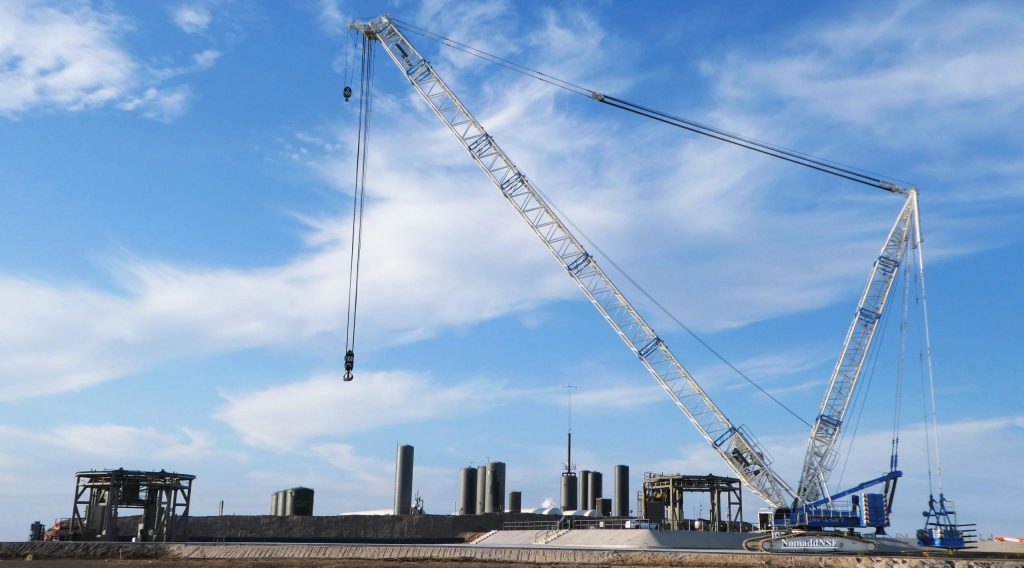
Meanwhile, in another kind of encouraging sign, SpaceX moved the crane needed to lift Starships onto the launch mount from the build site to the launch pad on December 21st – right on schedule. It’s extremely unlikely that SpaceX would complete that move unless it was confident that a Starship prototype would be ready to roll to the launch pad, further implying that Starship SN9 really has shrugged off its workplace accident after less than two weeks of delays. Stay tuned for updates – road closures that could be used to transport SN9 are still in place from around 8 am to 5 pm CST on December 22nd and 23rd.
Elon Musk
Tesla begins production of new Model Y trim at Giga Berlin
Tesla announced on Monday that its Model Y Standard configuration was officially being built at Giga Berlin, less than one month after the company officially announced the configuration early last month.
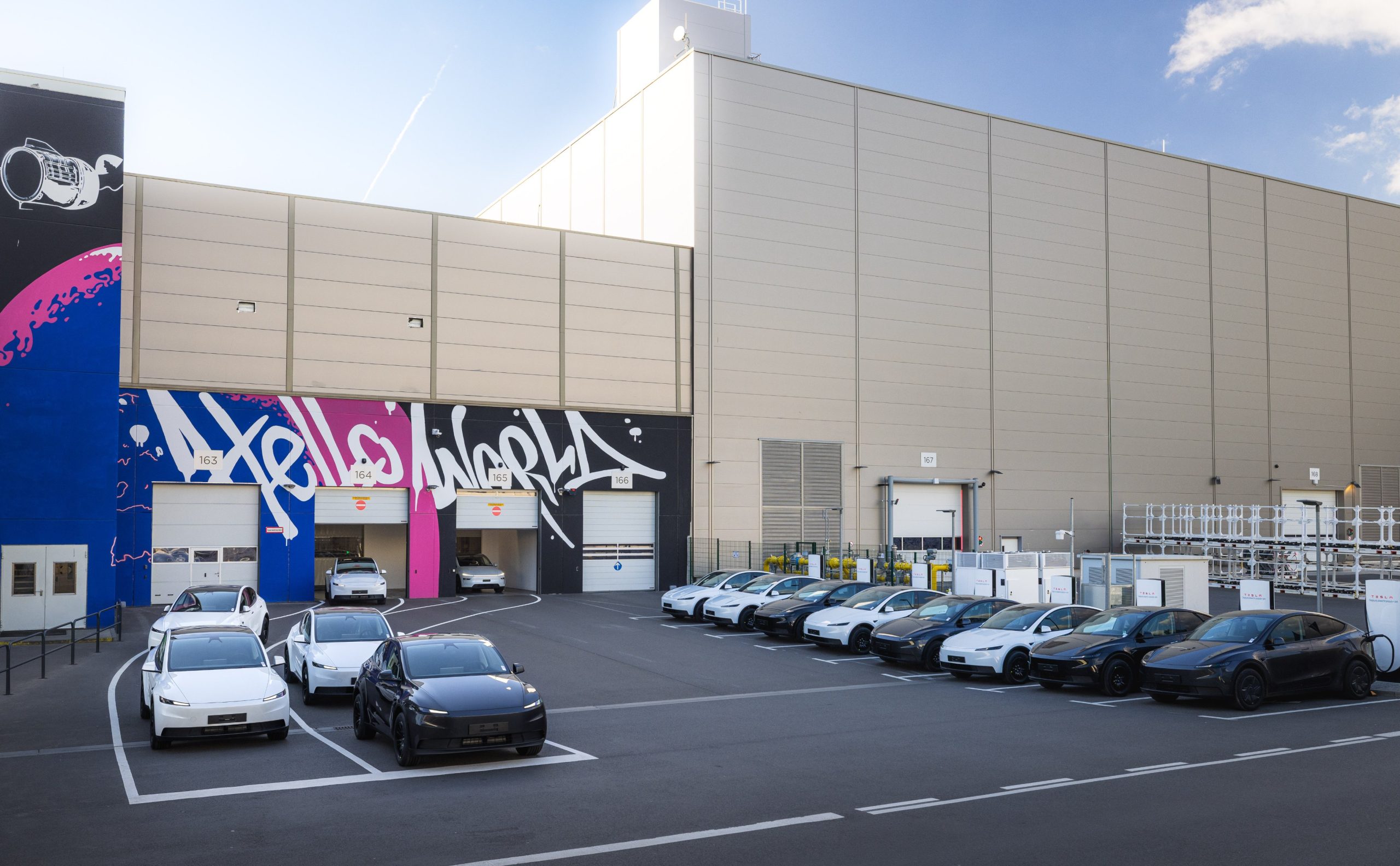
Tesla has begun production of the new Model Y trim at Gigafactory Berlin, the company’s production plant in Germany.
Tesla announced on Monday that its Model Y Standard configuration was officially being built at Giga Berlin, less than one month after the company officially announced the configuration early last month.
On October 7, Tesla announced the launch of the Model 3 and Model Y Standard trim levels, its answer to the call for affordable EVs within its lineup and its response to the loss of the $7,500 electric vehicle tax credit.
On October 3, Tesla started production of the vehicles in Germany:
Model Y Standard says „Hello World“ – Production at Giga Berlin has started today! pic.twitter.com/p37JIfJDIB
— Tesla Manufacturing (@gigafactories) November 3, 2025
The Standard iteration of the Model Y is void of many of the more premium features that are available in the Rear-Wheel-Drive, All-Wheel-Drive, and Performance trims of the vehicle are equipped with.
A few of the features of the Model Y Standard are:
- Single Motor configuration
- No rear touchscreen
- Textile seats with vegan leather, instead of all vegan leather
- 320-mile range
- No glass roof
The launch of the Model Y Standard was truly a move to help Tesla get vehicles into the sub-$40,000 price point, and although many consumers were hoping to see the company get closer to $30,000 with these cars, this is a great starting point.
Deliveries in the United States have already started, and it seems it will be a vehicle that will do one of two things: either push some consumers to finally make the jump to Tesla, or it will give car buyers another reason to buy the Premium trims, as they may feel the lack of features is not a good enough deal.
This is something we saw with the Cybertruck’s Rear-Wheel-Drive configuration, which launched last year and ended up being more of the latter option listed above.
The Tesla Model Y Standard is actually a great deal in Europe
It was only a $10,000 discount from the All-Wheel-Drive Cybertruck, but it also did not have adaptive air suspension, premium interiors, or the powered tonneau cover, which many people felt was too much of a sacrifice.
The Rear-Wheel-Drive Cybertruck was discontinued only a few months later.
It does not seem as if this is the case with the Model Y Standard, which already seems to be an attractive option to some buyers.
Cybertruck
Tesla begins wide rollout of Full Self-Driving v14 to Cybertruck
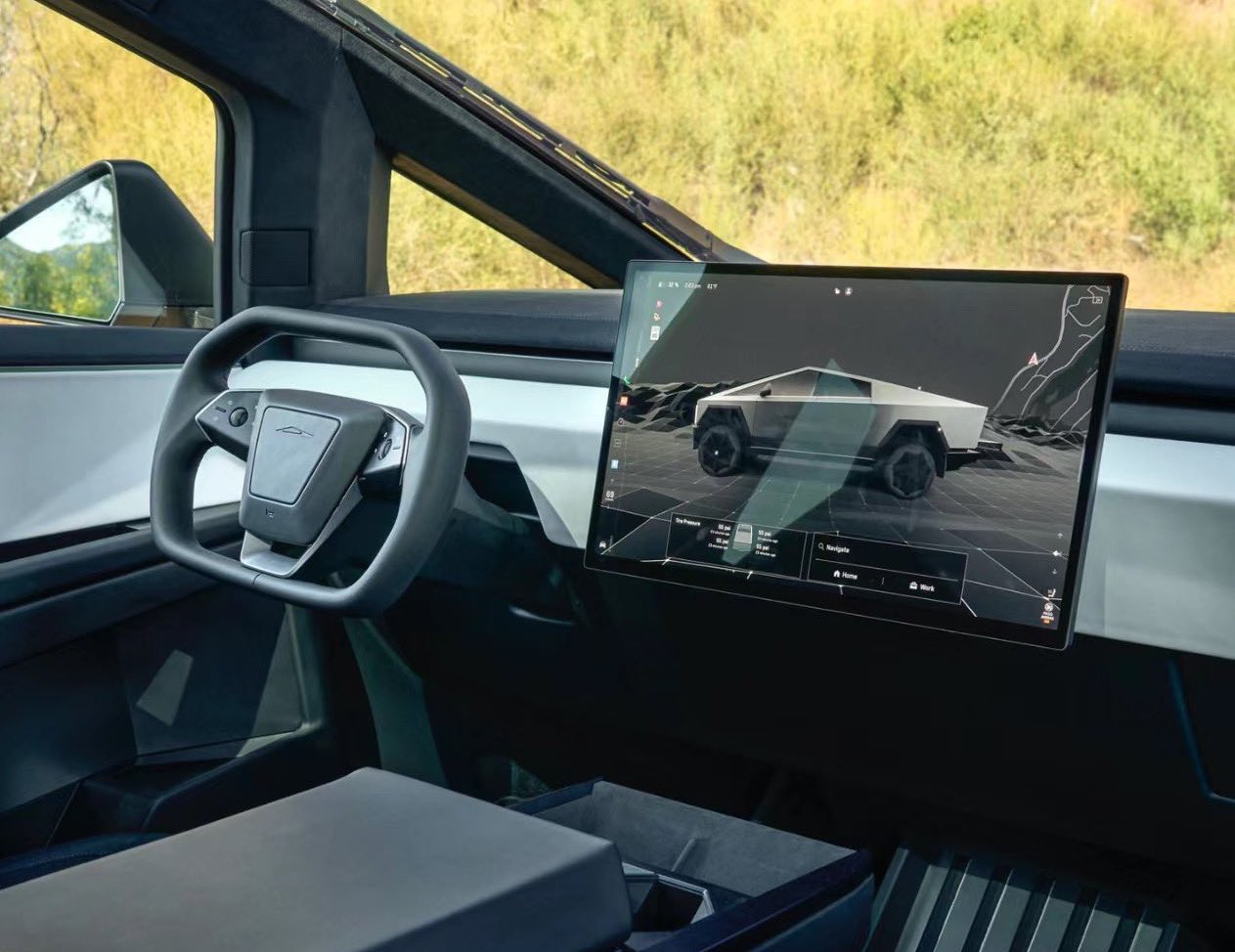
Tesla has officially begun the wide rollout of Full Self-Driving (Supervised) v14 to the Cybertruck about a month after the company started rolling it out to other vehicles in the fleet.
On Monday, Tesla officially started rolling out v14.1.5 to Cybertruck owners, the first FSD v14 rollout for owners of the all-electric pickup.
Owners have been anxiously waiting for Tesla to begin the wide release of v14 to Cybertruck, as the company said it would refine the suite for the vehicle.
Tesla has finally started rolling out to many owners, who are reporting that their Cybertrucks are downloading Software Update 2025.38.8.5, which contains FSD v14.1.5:
Tesla Self-Driving 14.1.5 for Cybertruck rolling out now! Too bad I just left for Austin. pic.twitter.com/WdxvEaK6ma
— Whole Mars Catalog (@WholeMarsBlog) November 3, 2025
So look what I just got on my @cybertruck ! FSD v14.1.5
Believe it or not @teslascope reported it about 5 minutes before it was visible on my app. That new API must be cooking! pic.twitter.com/GIiQrss4q5
— Chuck Cook (@chazman) November 3, 2025
Can confirm – arrived last night 🤝 https://t.co/0knxMK1Gfx pic.twitter.com/rqtU41pRaF
— Wes (@wmorrill3) November 3, 2025
Tesla has to be more cautious with rolling out FSD on the Cybertruck than on other vehicles for a few reasons. Initially, the Cybertruck utilizes an all-wheel steering system that turns differently than the S3XY lineup. This creates a challenge for the Tesla AI team as they have to cater to this specific maneuvering change.
Additionally, the Cybertruck is much larger, and the exterior cameras responsible for seeing the vehicle’s surroundings are placed differently than those of the other vehicles.
This requires additional calibration to ensure safety.
The full release notes for Full Self-Driving v14.1.5 are as follows:
- Added Arrival Options for you to select where FSD should park: in a Parking Lot, on the Street, in a Driveway, in a Parking Garage, or at the Curbside.
- Added handling to pull over or yield for emergency vehicles (e.g. police cars, fire trucks, ambulances).
- Added navigation and routing into the vision-based neural network for real-time handling of blocked roads and detours.
- Added additional Speed Profile to further customize driving style preference.
- Improved handling for static and dynamic gates.
- Improved offsetting for road debris (e.g. tires, tree branches, boxes).
- Improve handling of several scenarios including: unprotected turns, lane changes, vehicle cut-ins, and school buses.
- Improved FSD’s ability to manage system faults and recover smoothly from degraded operation for enhanced reliability.
- Added alerting for residue build-up on interior windshield that may impact front camera visibility. If affected, visit Service for cleaning!
Tesla Full Self-Driving v14 release notes for Cybertruck pic.twitter.com/fiMnjjTCY9
— TESLARATI (@Teslarati) November 3, 2025
News
Elon Musk shuts down Tesla ‘AMG’ division speculation: ‘Focus is autonomy’
“I think it’s best to leave that to the custom shops. Tesla’s focus is autonomous cars, building futuristic autonomous cars. We want the future to look like the future.”
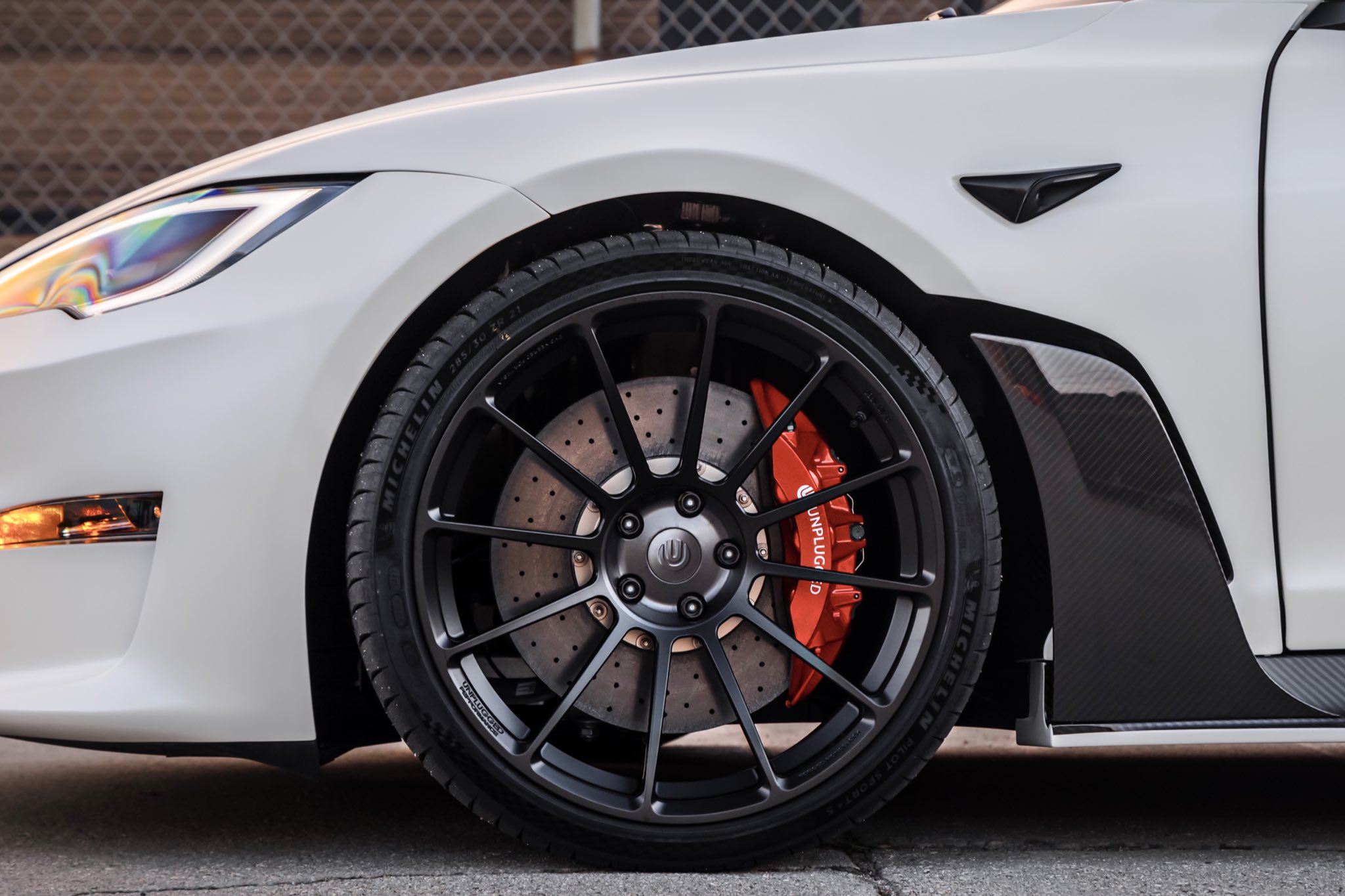
Tesla CEO Elon Musk was asked by Joe Rogan late last week whether the company would ever consider establishing an “AMG division” like Mercedes-Benz has established for powerful, race-inspired vehicles.
However, Musk turned down any talk of that, highlighting that the company is laser-focused on autonomous vehicles, seemingly hinting that any distraction from autonomy would be a detriment to the future.
Rogan drives a Tesla Model S himself, but it is not your run-of-the-mill all-electric sedan. Already outfitted with the Plaid powertrain that Tesla developed, Rogan took his vehicle to Unplugged Performance for a true performance outfitting.
The vehicle is completely overhauled with performance parts and seats. Known as the Model S-APEX, Rogan took delivery of it from Unplugged in January.
Rogan asked Musk on Friday during his most recent appearance on the Joe Rogan Experience podcast whether Tesla would ever establish an “AMG division” that would focus on catering Teslas to performance-based standards.
Musk said:
“I think it’s best to leave that to the custom shops. Tesla’s focus is autonomous cars, building futuristic autonomous cars. We want the future to look like the future.”
🚨 Elon Musk was asked by Joe Rogan if he would ever create an “AMG division” where customization and performance options are available.
Musk said:
“I think it’s best to leave that to the custom shops. Tesla’s focus is autonomous cars, building futuristic autonomous cars. We… pic.twitter.com/k7qy7UQc60
— TESLARATI (@Teslarati) October 31, 2025
Tesla fans have said for years that the company should consider acquiring Unplugged Performance and its Upfit Tesla division, which recently outfitted the Las Vegas Metropolitan Police Department’s fleet of Cybertruck cruisers.
However, it seems Tesla will keep things separate. Musk is primarily focused on autonomy, which will drive the technology forward and drive shareholder growth. Something like an outfitter for performance would be a cool thing for the owners who have the interest and the money.
It’s not a tremendous revenue driver or anything that would contribute to the financial state of the company. Mercedes-Benz, for example, is more accessible for consumers as it sold over 140,000 units from its AMG brand in 2024.
Tesla Model Y driver starts race in reverse, still wins against AMG SUV
It helps with driving revenue higher by as much as 15 percent compared to similar models that are not AMGs. However, would Tesla see this much of a benefit? Likely not, because the Performance trim already caters to many owners.
-
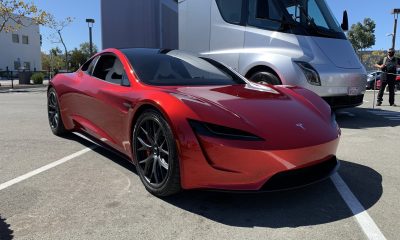
 News2 weeks ago
News2 weeks agoTesla updates fans on its plans for the Roadster
-
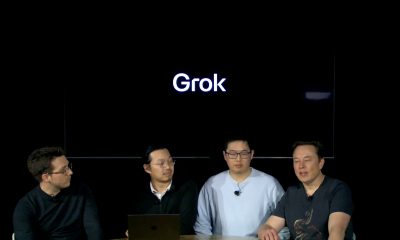
 Elon Musk2 weeks ago
Elon Musk2 weeks agoElon Musk: Grok 5 now has a 10% chance of becoming world’s first AGI
-
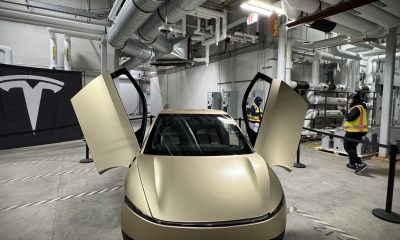
 News2 weeks ago
News2 weeks agoTesla is ramping up its hiring for the Cybercab production team
-
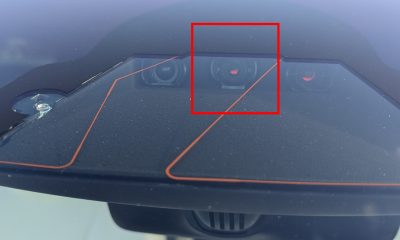
 News2 weeks ago
News2 weeks agoTesla rolled out a new feature with FSD v14 to fix a major complaint
-
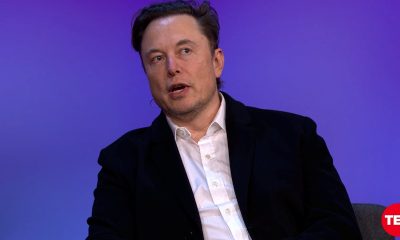
 Elon Musk2 weeks ago
Elon Musk2 weeks agoElon Musk hits back at former Tesla employee who disagrees with pay package
-
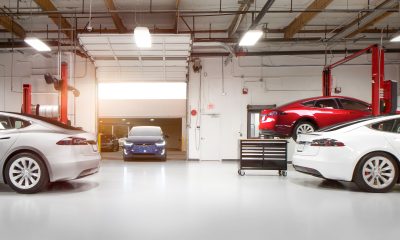
 News2 weeks ago
News2 weeks agoTesla just made Service even easier and more convenient
-
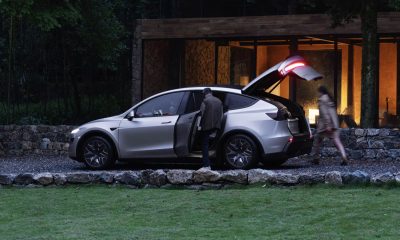
 News2 weeks ago
News2 weeks agoTesla Model Y L becomes China’s 4th best-selling mid-to-large SUV in its first month of sales
-
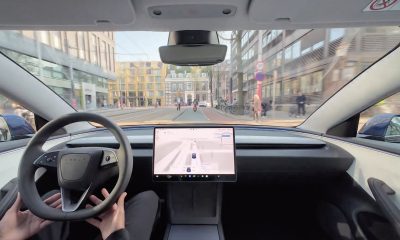
 News2 weeks ago
News2 weeks agoTesla Full Self-Driving’s new version officially gets a wider rollout


